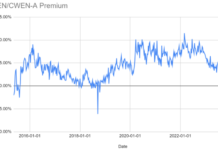By Beate Sonerud
Canada’s Northland Power (TSX:NPI / OTC:NPIFF) issued an asset-backed bond (ABS) last month through a SPV (Northland Power Solar Finance One LP). The amortising bond was a private placement of CA$232m with 18-year tenor. Semi-annual coupon is 4.397% and DBRS (Canadian credit rating agency) rated the issue BBB.
It is Northland’s first bond backed by renewable energy projects. Since the bond is asset-backed the recourse is to the solar projects instead of to Northland Power. This allows Northland to move operational-phase renewable energy assets off their balance sheet, freeing up space for new renewable energy investments. The specific assets are six “Ground-Mounted Solar Phase I projects”, with each operating a 10MW solar facility that sell all electricity to the Ontario electricity grid.
Stable revenue streams for the duration of the bond are provided by the 20-year feed-in tariff contract between Northland’s solar projects and the Ontario grid. This is a good illustration of how policies providing price signals for green in the real economy can enable climate bond issuance. That the bond has achieved a BBB investment-grade rating without further credit enhancement is exciting: As feed-in-tariffs are in place in many countries, there are vast opportunities for other utilities to copy Northland’s model for ABS issuance backed by renewable energy assets that have their less risky operational phase.
Proceeds from the bond “will be transferred via intercompany loans to the six Ground-Mounted Solar Phase” and to Northland for “general corporate purposes”. Now, at first we were a bit worried about the latter, as Northland Power operates facilities for natural gas as well as wind, solar and hydro – meaning general corporate use of proceeds would have excluded the bond from our climate bonds universe. However, we were happy to include it after Northland confirmed that the proceeds of the bond that are not used for the solar projects has been earmarked for the purchase of a large offshore wind project (Nordsee One) due to close early next year.
So why is that so exciting? Essentially the bond is an ABS version of the corporate use of proceeds bonds (such as Verbund) where proceeds are earmarked for specific green purposes. This matters as the bond not only refinances the underlying projects (that we would expect) but also enables Northland Power to grow its green portfolio – this additionally is what so many investors are looking for.
Now, Northland’s bond is not actually labelled green, but as we clarified that proceeds are aligned with a low-carbon economy, the bond issuance does fall into our unlabelled climate bonds universe. While we are happy to include the bond in our non-labelled climate bonds universe, future similar bonds could benefit from being labelled green. If Northland had decided to monitor and report on proceeds (and ideally gained a second opinion on green) we could easily have welcomed it to the green labelled universe.
Overall, exciting issuance structure – we hope to see it replicated by other utilities and renewable energy developers. Great work, Northland!
Beate Sonerud is Policy Researcher at the Climate Bonds Initiative, an “investor-focused” not-for-profit promoting long-term debt models to fund a rapid, global transition to a low-carbon economy.








